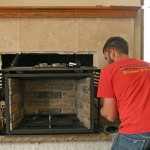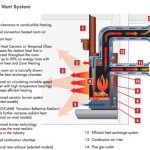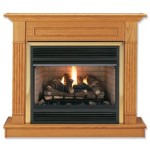The Art of Fireplace Stone Refacing: Transforming Your Hearth
Fireplaces, the heart of many homes, hold a special charm. Their crackling flames evoke warmth, comfort, and a sense of home. But over time, the stonework surrounding your fireplace can become dull, damaged, or outdated, diminishing its beauty. This is where fireplace stone refacing comes into play, offering a transformative solution to revitalize your hearth.
Fireplace stone refacing involves replacing the existing stone cladding with new materials, giving your fireplace a fresh look while potentially improving its functionality. However, it's not just about aesthetics; stone refacing can also protect your fireplace from heat damage, moisture intrusion, and other factors that can compromise its integrity.
Choosing the Right Stone
The type of stone you choose for your refacing project will significantly impact the overall look and feel of your fireplace. Natural stones like marble, granite, and limestone offer timeless elegance and durability. Alternatively, manufactured stones can provide a wider range of colors, patterns, and textures, allowing you to match any decor style.
Consider the following factors when selecting your stone:
- Durability: Natural stones are generally more durable than manufactured stones, but both can withstand heavy use and heat.
- Appearance: Choose a stone that complements your existing decor and personal taste.
- Cost: Natural stones tend to be more expensive than manufactured stones.
Preparing for Refacing
Before beginning the refacing process, it's crucial to prepare the fireplace. This involves removing the existing stone cladding, cleaning the surface, and repairing any damage to the underlying structure. Ensure the surface is smooth, level, and free of debris to ensure a proper bond between the new stone and the substrate.
Application Techniques
There are two primary methods for applying stone veneer to a fireplace: thin-set and mortar. Thin-set is a premixed adhesive that provides a strong bond between the stone and the surface. Mortar, on the other hand, is a traditional mixture of sand, cement, and water that offers exceptional durability and flexibility.
The specific application technique will depend on the type of stone and the condition of the fireplace. For example, thin-set is often used for lightweight stone veneers, while mortar is preferred for heavier stones and uneven surfaces.
Grouting and Finishing
Once the stone veneer is installed, the joints between the stones need to be filled with grout. Grout helps to seal the gaps, prevent moisture penetration, and enhance the overall appearance of the fireplace. Choose a grout color that complements the stone and your decor scheme.
After grouting, the refaced fireplace can be further enhanced with additional finishing touches, such as a stone mantel or decorative trim. These elements can add a touch of sophistication and personalization to your hearth.
Conclusion
Fireplace stone refacing is a transformative process that can revitalize the heart of your home. By carefully selecting your stone, preparing the fireplace properly, and following the appropriate application techniques, you can create a stunning new focal point that will enhance your ambiance and provide lasting enjoyment for years to come.

Thin Stone Veneers Make A Fireplace Update Easy Swenson Granite 100 Natural Stones

Refacing A Fireplace With Stone Veneer Horizon

Weathered Stone Veneer Natural Thin Cape Cod Nantucket Ma

Thincut Natural Stone Veneer Csi All Things Can En

Read This Before Your Stone Fireplace Makeover Understanding Undertones

Stone Veneer Interior Design Living Room Kitchen Bedroom Ideas More Buechel

A Step By Guide To Fireplace Refacing Diy Family Handyman

Stone Veneer At Com

Stone Fireplace Design And Remodel

Updating Your Fireplace With Natural Thin Stone Veneer
Related Posts








